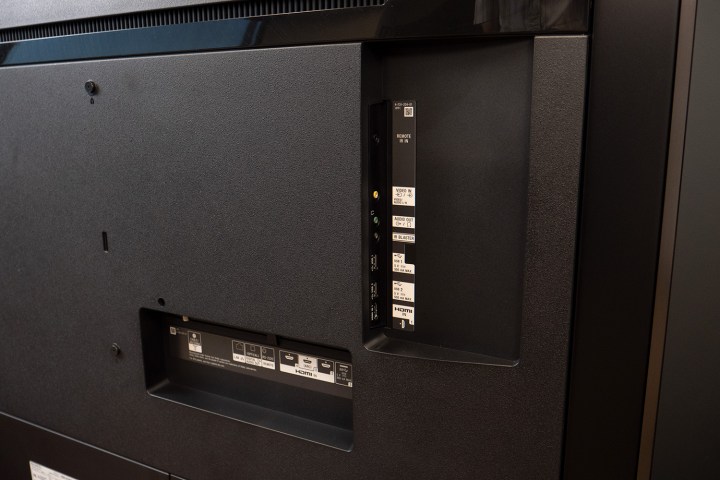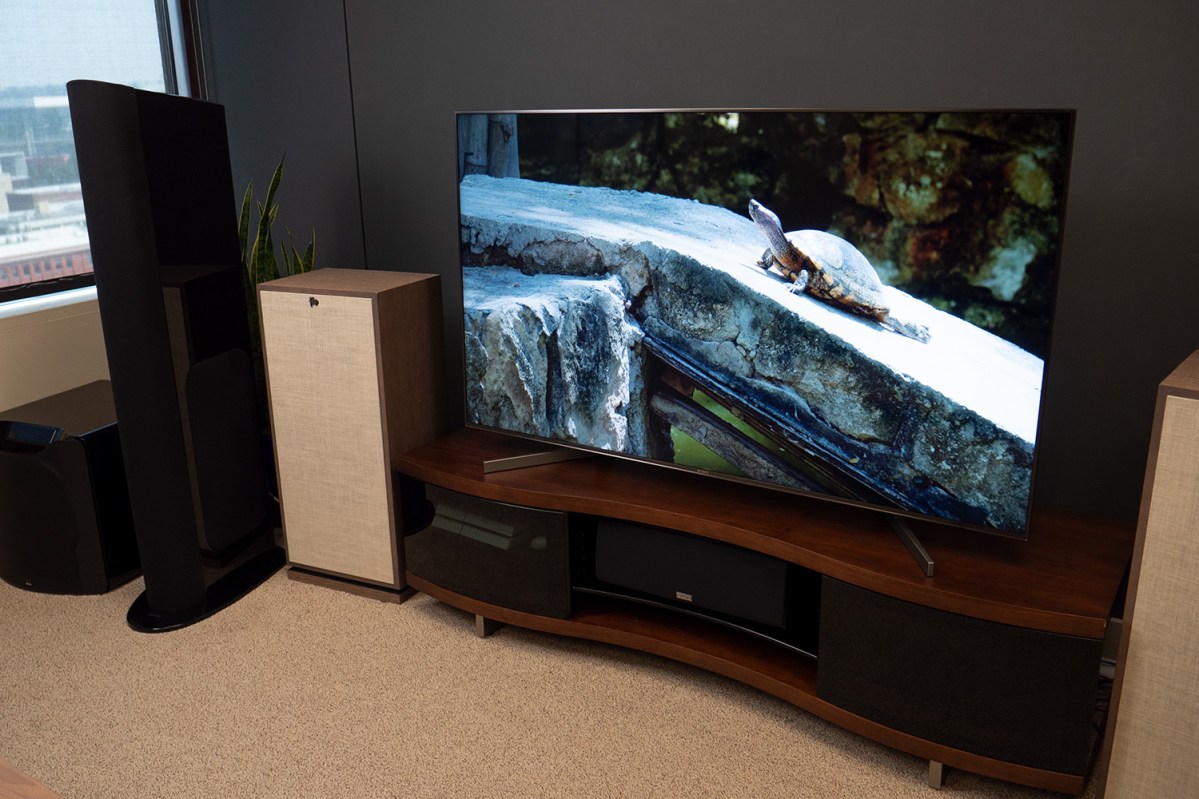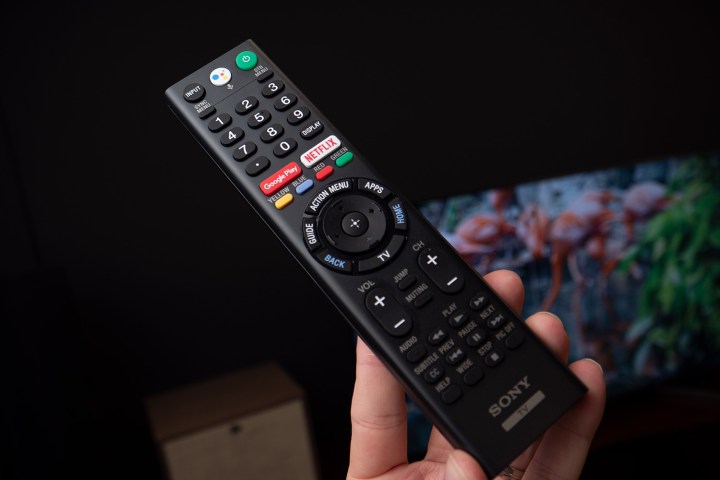
- Excellent color accuracy
- Smart use of brightness in HDR
- Strong black levels
- Best-in-class processing
- Excellent cinematic motion
- Sound isn’t great
- Android TV is sluggish
Sony XBR-X900F series models
- While we reviewed the 65-inch XBR65X900F model, our review applies to all XBR-X900F series TVs
- 49-inch (XBR49X900F)
- 55-inch (XBR55X900F)
- 65-inch (XBR65X900F)
- 75-inch (XBR75X900F)
- 85-inch (XBR85X900F)
Until just a few weeks ago, the Sony X900F was the best TV Sony produced this year. I was fine with that because, despite a price point that tended toward the midrange, the X900F offered outstanding picture quality. Then the new Master Series TVs were announced and, for a moment, we worried that the X900F might be overshadowed. But once we saw the sticker price on new Z9F Master Series LED TV, it became clear that the X900F reviewed here would be the TV most folks would want to shoot for if top-tier picture quality at an attainable price was their priority.
While the incredibly awesome Z9F can only be had in 65- and 75-inch variants at $4,500 and $7,000 respectively, the X900F comes in screen sizes ranging from 49- to 85-inches, with prices starting at $1100. At a palatable $2,000, a 65-inch X900F is $2,500 less expensive than the Master Series Z9F.
By comparison, a 65-inch Samsung Q7F will run you $2,200, an LG C7 OLED goes for $2,500, and a TCL 6-Series costs $1,040. That last one is no typo – the TCL 6-Series is well-known for offering picture quality rivaling its peers for half the price.
So how does the X900F stand up to the competition? Does it earn its keep? And what is it like to live with the TV? We spent more time than Sony probably would have liked with the X900F to get a deep look into whether this model might be the right choice for you.
Out of the box
Perhaps what makes the Sony X900F so beautiful is what it doesn’t try to do. This TV’s simple, sleek, and understated design it at the heart of its appeal. Quality materials are tastefully appointed, resulting in a TV that exudes high quality without calling undue attention to itself. Ideally, when the TV is turned on, the TV itself disappears and all you’re left with is an image. The X900F gets very close to that ideal thanks to its thin aluminum frame.
The brushed-metal feet that support the TV when it’s stand-mounted can be positioned with the toes in or the toes out. We’re not fans of how the latter option looks, but those short on entertainment stand surface area will appreciate the option to reduce the TV’s footprint.
What makes the Sony X900F so beautiful is what it doesn’t try to do.
The back of those feet offer channels for a modicum of cable management, but there are no other efforts to keep wires in check like we’ve seen with some other TVs. Since the connection bays face down and out to the side with no covers, users will have to get creative if they want to keep things looking neat behind the TV.
The X900F comes with Sony’s voice remote, which is starting to look a little dated compared to competing brands. While LG lets you wield its remotes like a Wii controller, and Samsung’s slim metallic remote features precious few buttons, Sony sticks with an old-school design and layout that provides more buttons than you probably need – save perhaps for that voice button for Google Assistant. Sexy? No. Functional? Yes.
The ins, outs, and other fancy features
The X900F offers four HDMI inputs, all of which support 4K HDR sources and HDCP 2.2, but Sony tells us you’ll want to use HDMI 2 and 3 for high-bandwidth sources like a 4K UHD Blu-ray player, 4K HDR-capable gaming console, or HTPC/gaming PC. Unlike some of its competition, the X900F will not automatically detect the need for enhanced bandwidth support, so you’ll want to turn on that feature manually (instructions below). The X900F doesn’t support variable refresh rate (VRR) either, but then again, that’s a feature found only on Samsung QLED TVs at this time, so we don’t knock it for that.

Under the hood is Sony’s X1 Extreme processor, which is the heart and soul of this TV and really the chief reason one should consider it. You don’t think about it when standing in front of one, but it’s that processor that is responsible for the X900F’s glorious picture. From excellent color management to clean motion resolution for everything from games to 24-fps movies, the X1 Extreme makes the X900F look like a Sony, and that’s a very good thing.
When the X900F came out, it supported HDR10 and HLG for HDR processing. Since then, Sony has released a firmware update that endows eligible 2018 Sony TVs with Dolby Vision HDR processing – you’ll get it when the TV automatically updates during setup. Bolstering the X900F’s HDR handling is Sony’s object-based HDR enhancement, which we find works remarkably in combination with the TV’s full-array direct LED backlighting system.
Sony is still sticking with Android TV for its operating system and streaming platform. We’ve got our gripes, which we’ll discuss later, but chief among Android TV’s bright spots is that it is natively Chromecast capable, which is a big boon for those who like to find content to watch on their mobile devices and then launch it on the big screen.
Setup
We give Android TV a lot of guff for being so sluggish – it’s one of the few pain points involved in owning a Sony TV – and often suggest folks purchase a Roku Ultra or Amazon Fire TV Cube for their 4K HDR streaming needs. Android TV does have a few benefits, though. Outside of the Chromecast feature mentioned earlier, we appreciate the simple setup process Sony’s system takes users through. You’ll still have to peck out your passwords and such, but the process is otherwise painless.
Add to that the fact that Sony’s picture presets are among the best out there, and more users will find they won’t be tinkering around in the settings section for much more than a few minutes. Seriously, unless you are an exuberant videophile, you will find Sony’s X900F delivers a very accurate, color-controlled picture with great contrast and suitable brightness from its Custom, Theater Pro, or Theater Home modes. Choose gaming mode for the lowest input lag available and then make subtle tweaks to get the picture right where you want it.
Since all TVs are different, we’re not going to make detailed picture settings suggestions, but we do have some very useful tips we think all users should heed when getting their TV up and running.
Starting with one of the aforementioned picture presets, first go into the External Inputs section, move down to HDMI signal format, and turn on enhanced format, presuming you are connecting some high-end 4K HDR sources to HDMI ports 2 and 3.
Next, go into Advanced Settings and move down to select Motion. Here, turn Motionflow to off and Cinemotion to high. This will eliminate soap opera effect and calm judder when watching movies.
For color temperature, we prefer Expert 1, as that is closest to the color standard preferred by calibrators and will get you nearest to a professional setting without having to hire a professional. If you find it to look a little too warm, you can try one of the other settings to zest the picture up a bit, but this will affect color accuracy a bit.
Finally, for brightness, most folks won’t need to go past 8 or 9, even for a very bright room. However, when adjusting HDR mode, go ahead and go for max brightness. HDR mode also benefits from Auto Local Dimming set to high, though we suggest local dimming should go down to medium or low for non-HDR viewing.

Performance
When talking about a TV as polished and downright pretty as the X900F, we think it helps to start by pointing out that you can buy more features and marginally better performance in a few areas, but when it comes to LCD TVs, the X900F is one of the better values out there. Sure, it’s a little on the pricey side, but we think you get what you pay for with this TV and that it’s worth every penny.
The X900F offers a blissful TV watching experience.
Sure, one could look to Vizio’s P Series Quantum and get excellent picture quality, but the user experience isn’t the same, you don’t get Sony-level picture-processing, and it costs more. TCL’s 6-Series offers astonishing quality for the money, but they don’t possess the color accuracy or processing chops you’ll find in the X900F, plus we found panel consistency to be an issue. Samsung’s Q7F is pretty compelling, and frankly, deciding between it and the X900F is going to be tough.
In the end, though, Sony’s processing does it for us. So, from a picture quality standpoint, we’re going to end up siding with Sony more often than not. During our viewing sessions, we never found ourselves distracted by any picture anomalies or irregularities. Hour after hour, we found ourselves welcomed in and immersed by the viewing experience the X900F provided. It just felt like home to us.
Off-angle viewing is not as strong as some of the most expensive TVs out there, but it is better than most of the LCD TVs we test today. Sure, you lose a little at extreme angles, but we don’t hear folks complaining about this much, if at all, and we don’t think you will, either.

A TV is about much more than its picture quality, and until Android TV stops hanging up and slowing us down when we’re trying to conduct the most basic operations, we’re going to have something sad to say. It pains us to do so, but we’d be remiss by leaving this criticism out.
Sound quality is another area where the X900F doesn’t do itself justice. While we’re blown away by the sound systems available on the new Sony OLED TVs, this one is pretty run-of-the-mill and requires at least a midrange soundbar so that the sound matches its picture.
Otherwise, the X900F offers a blissful TV-watching experience. For the money, you can do different, but you can’t do better.
Warranty information
Sony offers a 1-year limited warranty for the X900F. You can learn more about the warranty here).
Our Take
Sony’s X900F offers some of the finest picture quality you can get without shelling out thousands more. With top-notch picture processing, accurate color, and excellent HDR performance, this is a 4K LCD TV that we’d be proud to have in our own living room.
Is there a better alternative?
The Samsung Q7F QLED TV offers some compelling user-facing features like its One Connect box, automatic source detection, and the zippy Tizen interface, but we feel Sony’s local dimming system is stronger and that picture quality across the board is just slightly more refined.
How long will it last?
8K TVs may be right around the corner, but they won’t be practical for a long time. The X900F is a wise purchase and will hold on to its value and provide stellar performance for years to come.
Should you buy it?
Yes. The Sony X900F is an outstanding TV, and if you value Sony’s approach to picture quality, this is the best available option for a price that won’t require a second mortgage.








